If you look carefully at the energy vampires in any house, there’s one common denominator: heat. This means cooking can be among your biggest costs, along with electric heaters and warming water for washing and radiators. So what are the most effective things you can do in the kitchen to bring your energy bills down?
I carried out a series of mini experiments at home to compare the energy saving specs of the different appliances and normal cookers.
The savings and payback period of all the following changes will depend on the food, fuel and technology. But in general using more efficient kitchen technology will lower your household energy bills.
To understand the results of my pasta, rice and potato investigations, let’s look at the basics of energy consumption. Whether you have gas or electricity, energy use is measured in kilowatt hours (kWh). Boiling ten litres of water in a kettle from room temperature consumes about 1kWh. A 1kW (1,000 watts) electric heater will consume 1kWh in one hour.
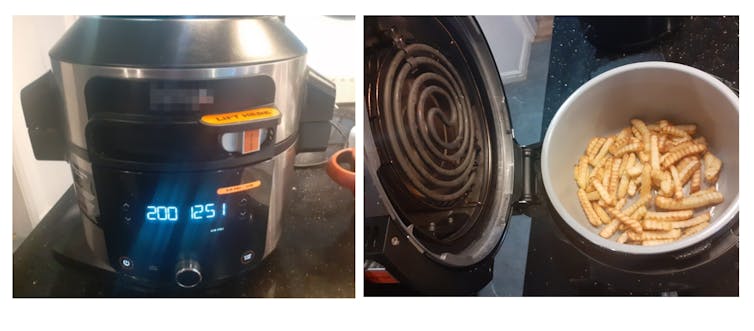
Chips: air-fryer wins
My air fryer uses about 68% of the electricity an oven uses. I cooked 500g of oven chips from frozen at 200℃. The air fryer used 0.43kWh and cooked the food in 18 minutes, while the electric oven consumed 1.35kWh and needed 32 minutes. This could be explained by the large size of the oven and the fact it needs preheating.
The air fryer could save a household in the UK about £114 per year assuming 500g of chips is cooked every day. This is based on electricity and gas prices of £0.34 and £0.10 per kWh respectively, the prices prescribed by energy price cap in October 2022.
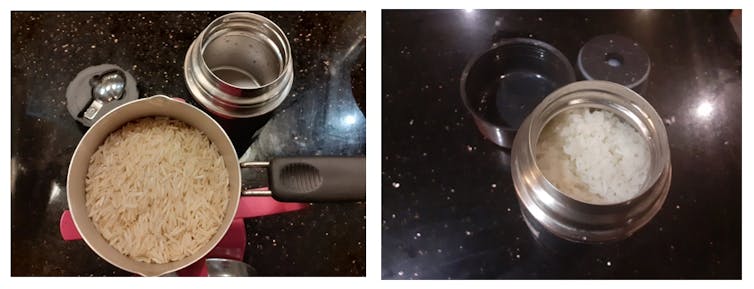
Rice and pasta: thermos cooker wins
The thermos cooker used only 0.03kWh to boil 200ml of water to cook 150g of rice, which took two hours (for one person). The normal saucepan needed only 15 minutes but guzzled 0.18 kWh. The thermos cooker saved 83.3% energy. The financial savings would be about £74 for 600g rice a day for one year.
When cooking pasta for a one-person portion, the energy needed to boil the water was 0.09kWh and this cooked the pasta in 30 minutes. The normal saucepan consumed 0.26kWh of electricity to cook the same pasta. This is a saving of 65.4% of energy. The savings would be about £84 for a family of four, based on one meal per day.
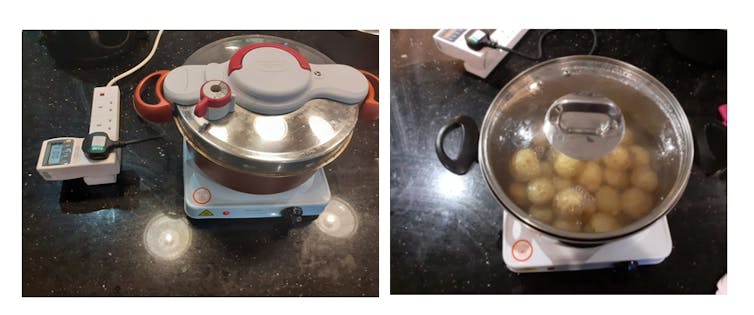
Potatoes: pressure cooker wins
I boiled 1kg of potatoes in each test and used electricity. The normal saucepan hoovered up 0.65kWh and needed 30 minutes, the pressure cooker drained me of 0.42kWh in 20 minutes and the slow cooker needed about 0.59kWh and cooked the potatoes in two hours.
The cost savings of using the pressure cooker in the UK will be about £28.50 per year using electricity. For the slow cooker, the savings will be £7.40 a year, but higher when cooking at lower temperatures for longer time. However, if you have a gas stove, a pressure cooker could save up to 81% of the energy cost compared to a normal saucepan.
The payback period
Based on the average current market prices; it costs about £15 to buy a small thermos cooker (£100 for a family size), £70 for a domestic air fryer, £50 for a pressure cooker and £35 for a slow cooker.
Assume a family will cook one meal a day for a year. For an air-fryer versus an electric oven, the payback period for oven chips of one meal a day is about seven months. After the £70 investment, you won’t see real terms savings for seven months. But then you will save £114 a year.
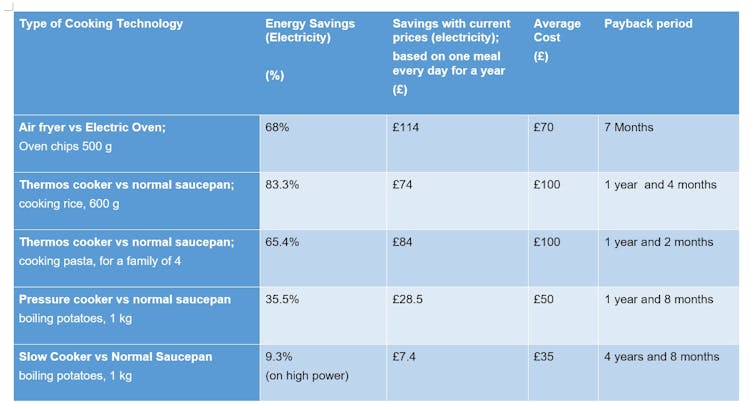
There are other things you can do to cut the cost of cooking food.
Efficient cooking is about heating the food rather than the kitchen. The below picture is an infrared image that shows the heat loss from cooking pasta using a normal saucepan. Huge amounts of energy escape from the sides of the pan instead of warming up your supper.
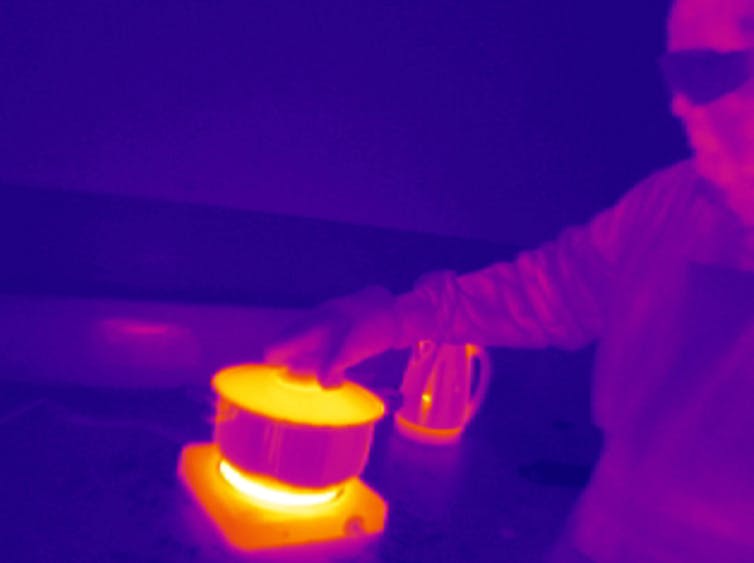
Gas ovens are cheaper
Think about energy prices in the country you live in. In the UK, gas prices are about 30% of the cost of electricity and the daily standing charge is only about 60% of the electricity standing charge, based on October 2022 prices.
So for the same amount of heat, using a gas oven should be about 70% cheaper in theory. Electric equipment is more efficient because the heat is more effectively distributed and controlled. But consumer champion Which? estimated electricity end ups double the cost of gas for oven cooking.
Induction hobs beat conventional electric ones
For the stove, it’s a different matter. Electric induction hobs use a magnetic field to heat pans directly. Induction hobs save energy in two ways. The hob itself does not get hot so does not waste heat. And heat is transferred through a magnetic field to the pan without leaking heat to the surroundings. But you will need ferrous metal pans.
Don’t increase heat while liquids are boiling
As a final tip, remember that using high temperatures on already boiling liquid won’t make the food cook faster, as the temperature of the liquid will not change. If you like boiled eggs for breakfast, once the water starts boiling, turn the heat down.
![]()
Amin Al-Habaibeh does not work for, consult, own shares in or receive funding from any company or organization that would benefit from this article, and has disclosed no relevant affiliations beyond their academic appointment.











